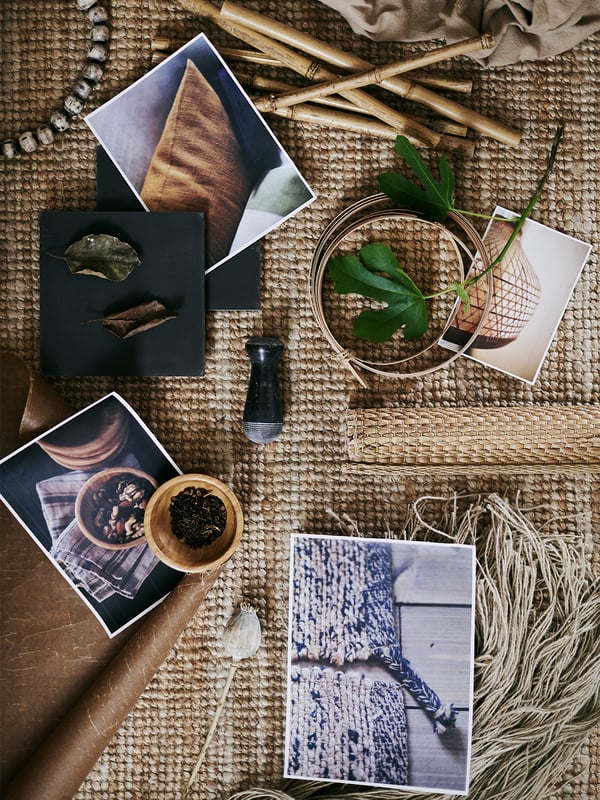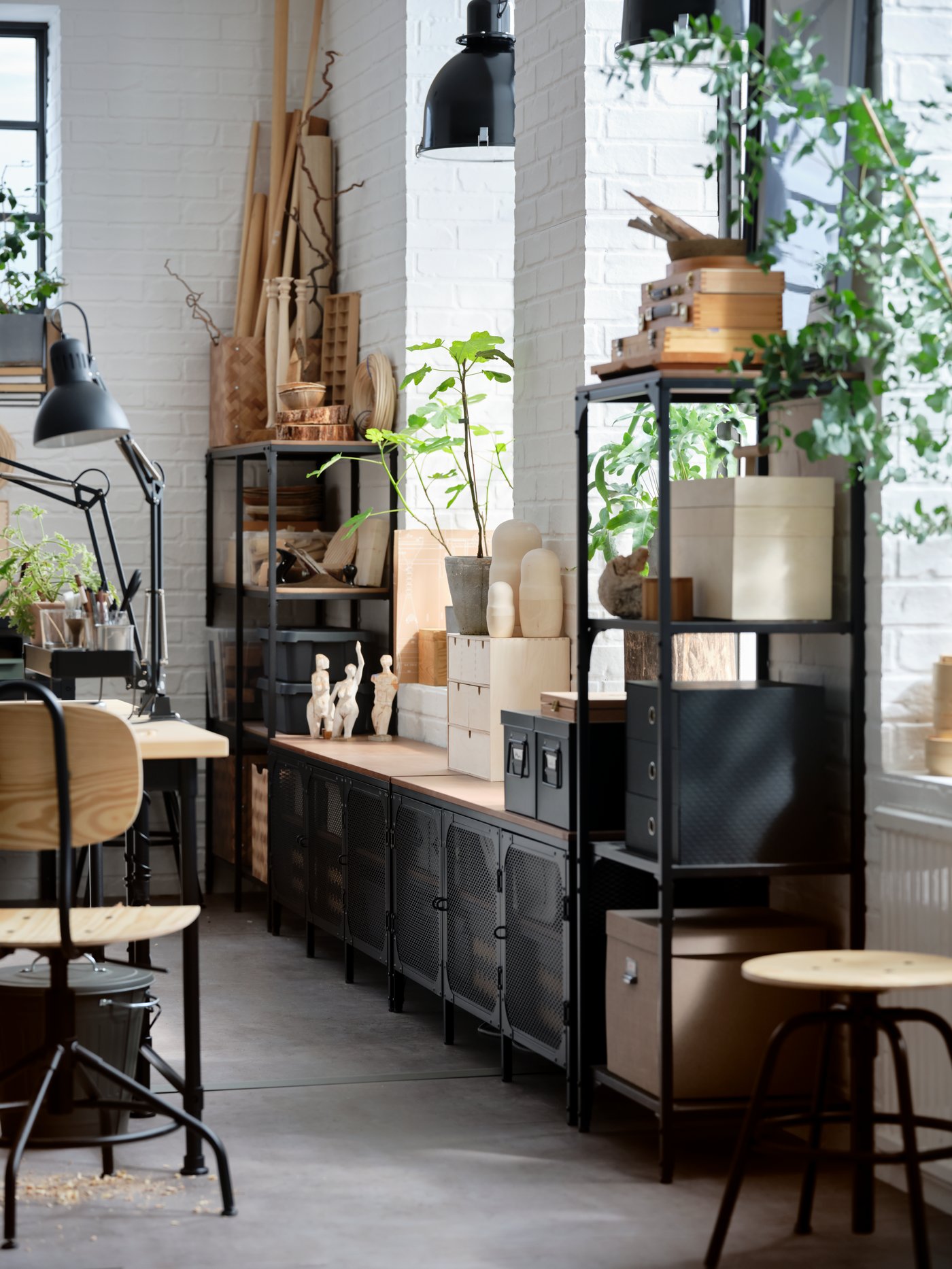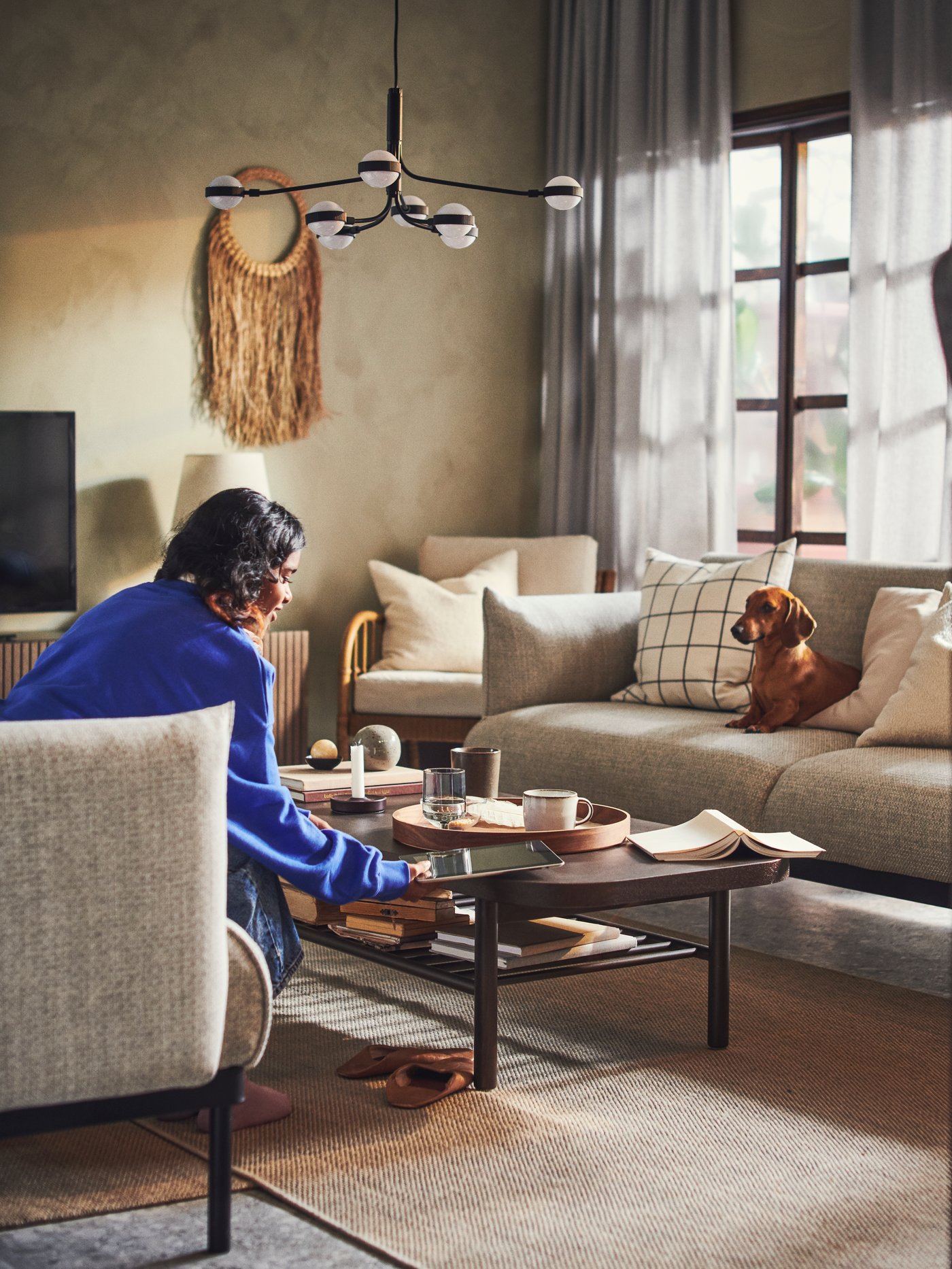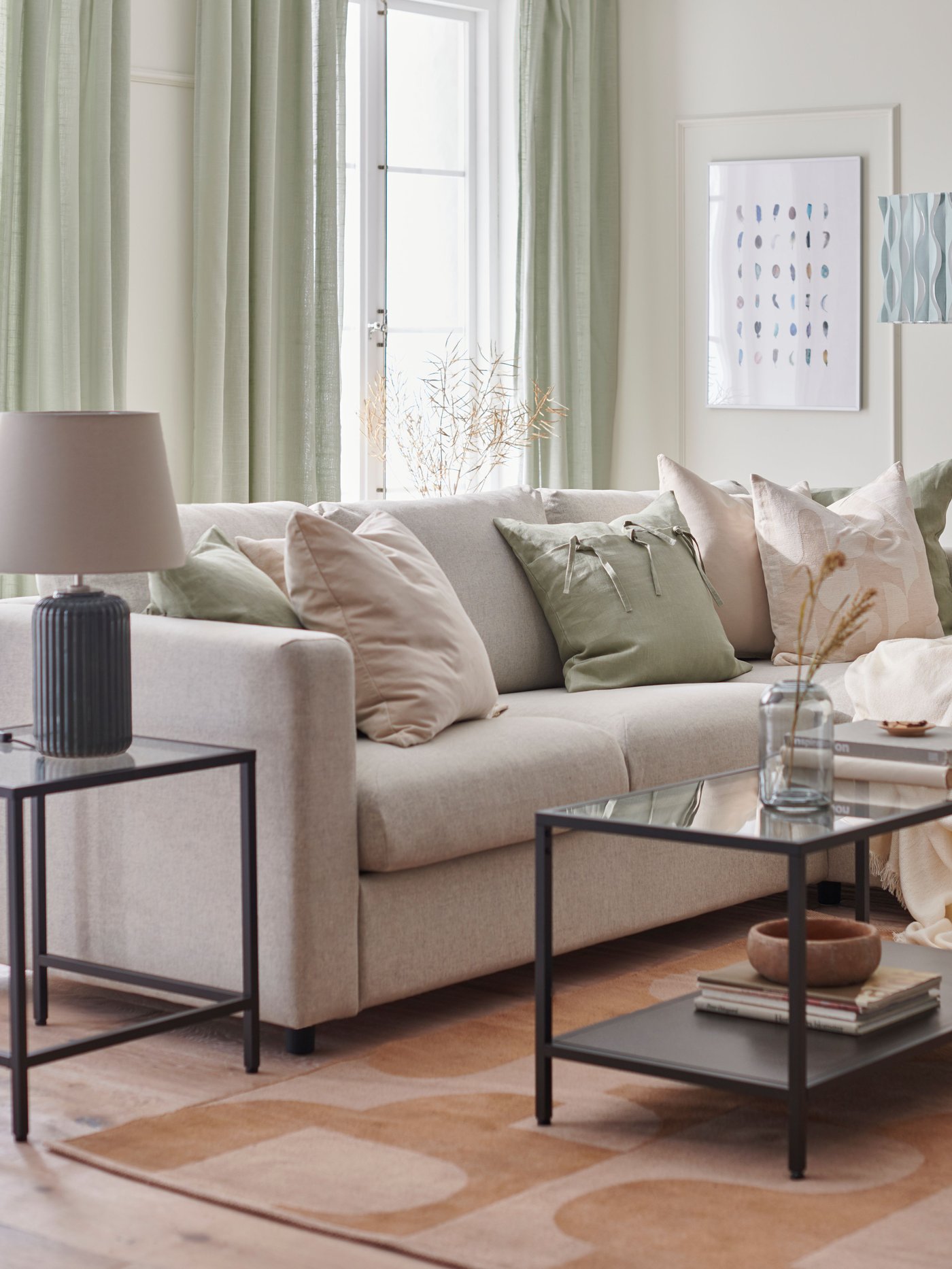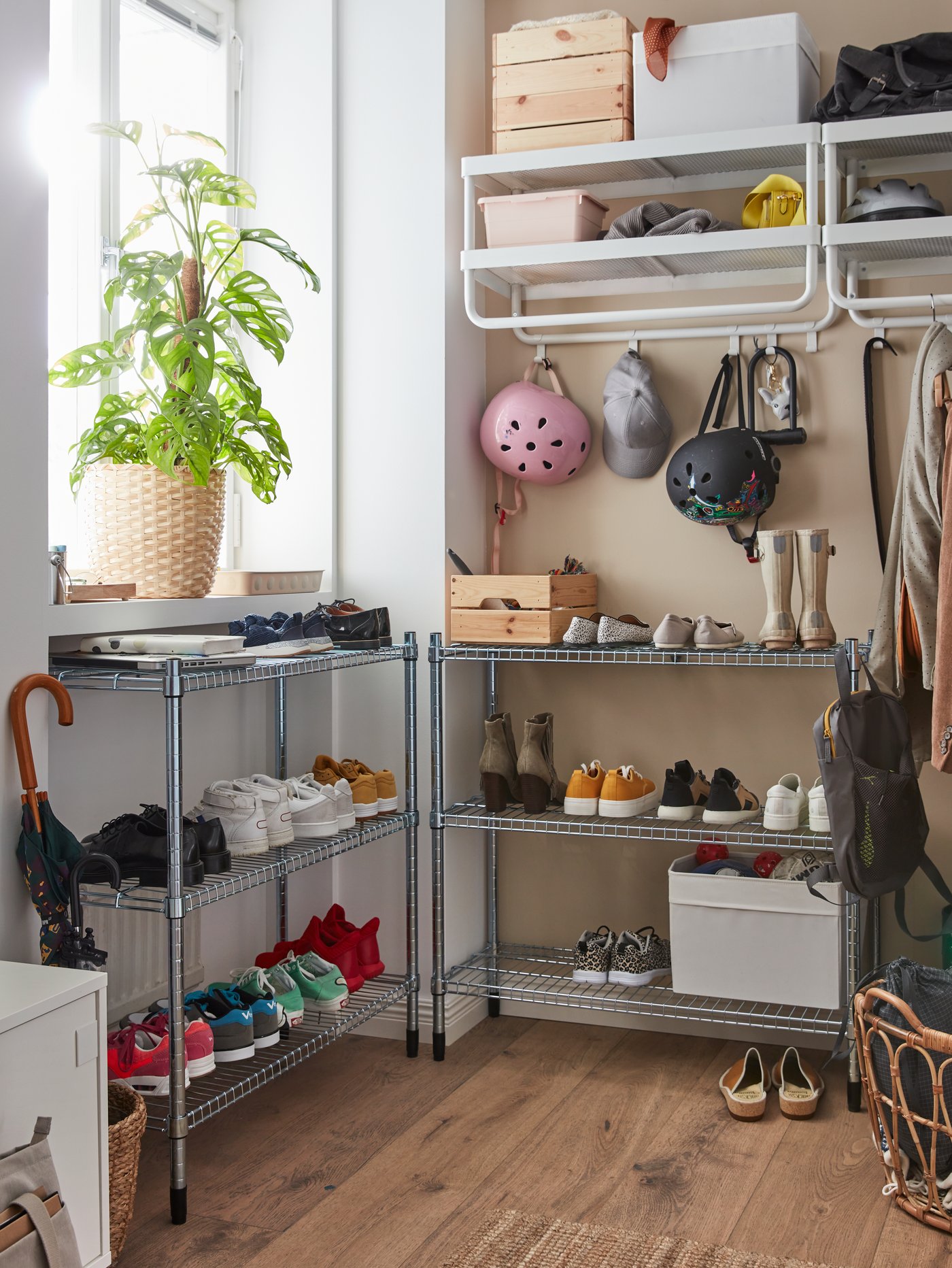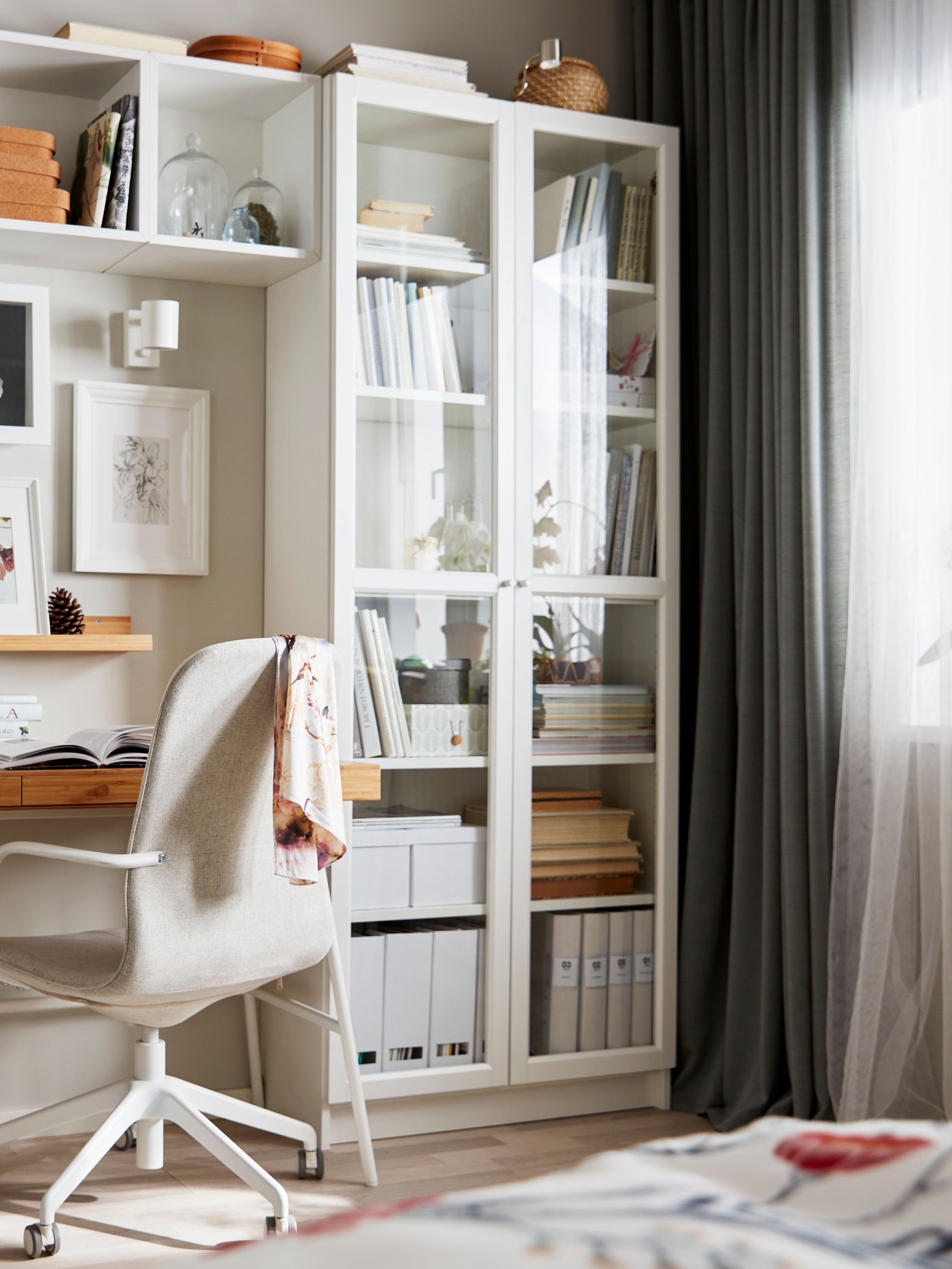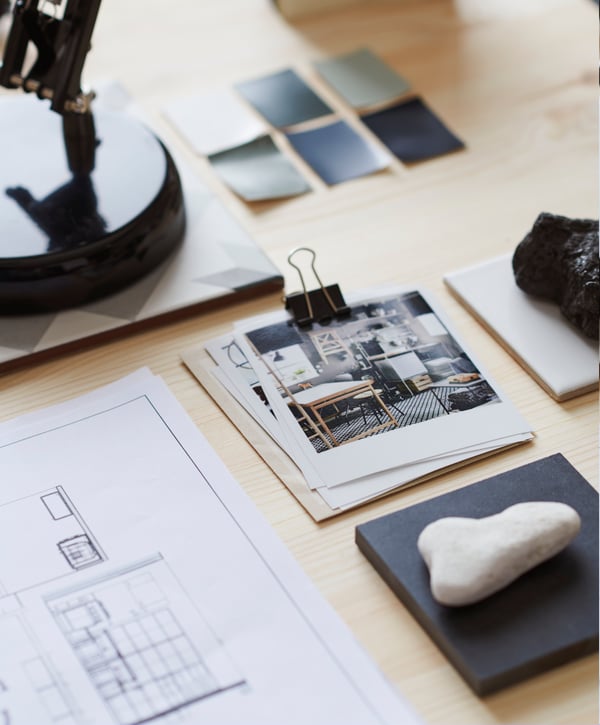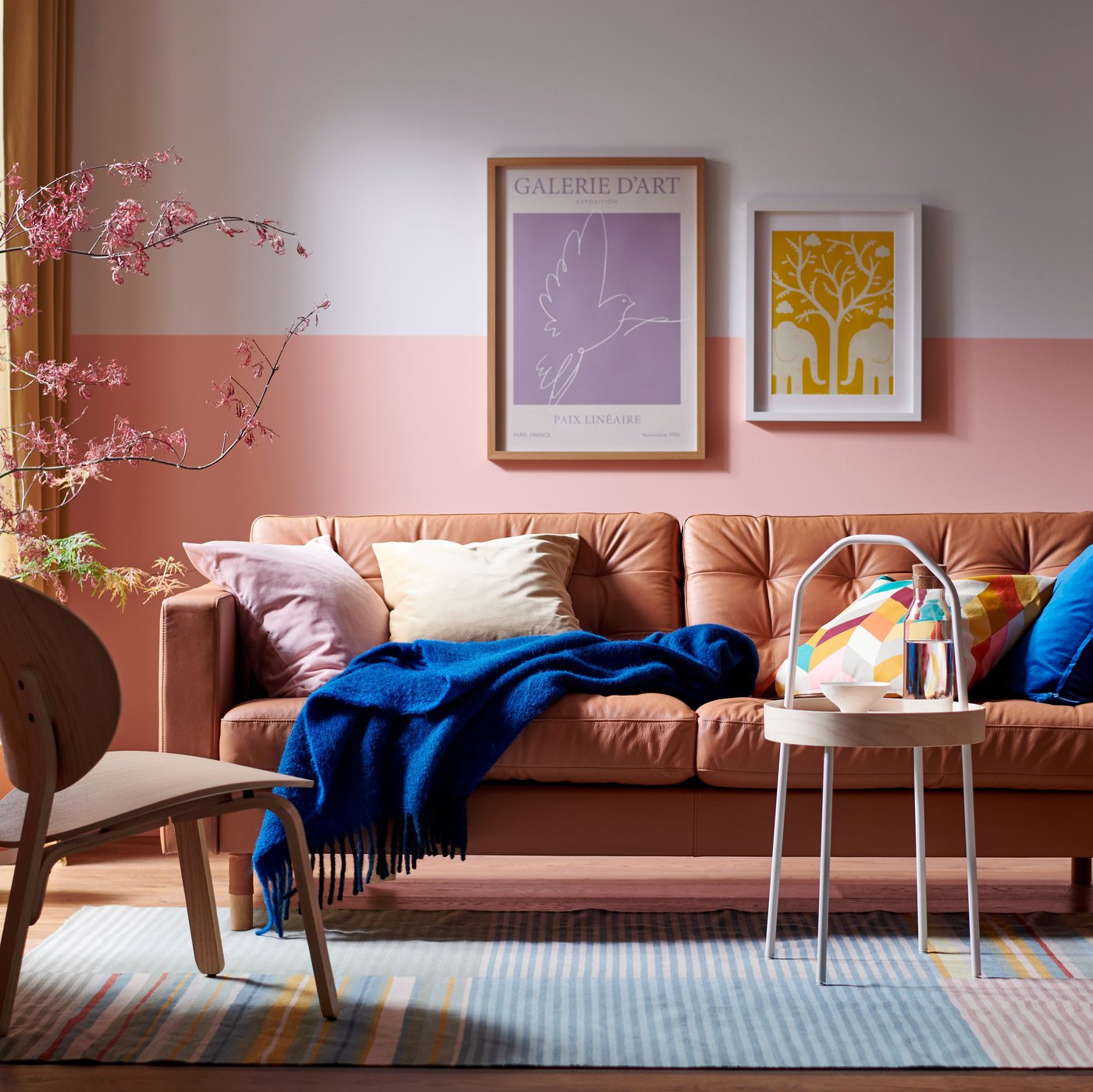Create a mood board to find your style
Interior design doesn't have to be difficult. Do you want to style a room in your home but don't know where to start? IKEA can help you get started. Creating an interior mood board is a simple way to visualise your ideas for your interior. Start by gathering inspiration online or from magazines, just to get an idea of what you want. Then, collect the images, colours, textures, and objects you like and follow these tips to create your new style.


Step 1: Get inspired
What inspires you for this space? It can be anything: a favourite colour, a piece of art, a photo, a flower from the garden, a poem, or a piece of furniture. Use that inspiration as a starting point to build your mood board.
Another helpful approach for creating an interior mood board is to explore different home styles. At IKEA, we have products for every home style. Does the Bohemian style suit you? Or are you more into the industrial style, with its robust and black elements? Discover which home style fits you and get inspired by everything that goes with it. Maybe it’s something for your own interior?
More inspiration for your interior design
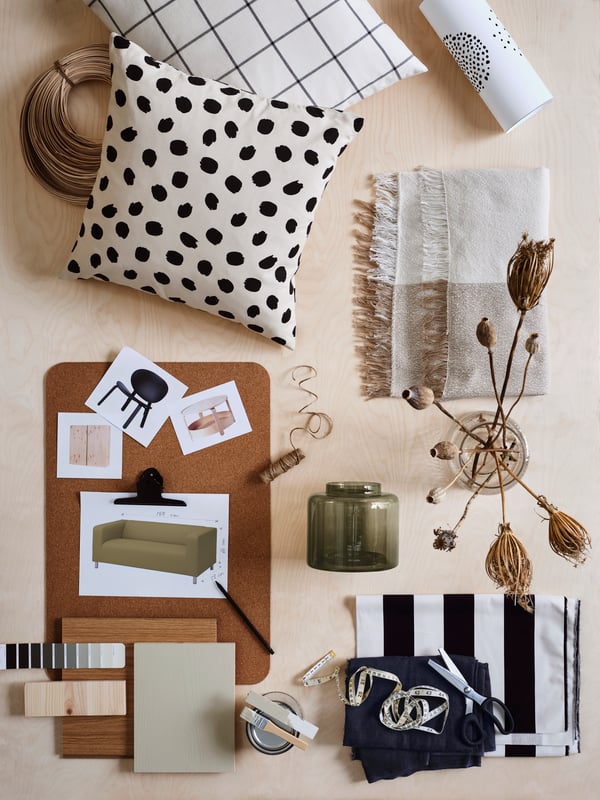
- Product information page
Step 2: Collect images
- Look for images that appeal to you, such as photos of interiors, architecture, furniture, or materials.
- Pay attention to aspects like lines, use of materials, design, and colour.
- You can also add words to describe what exactly attracts you to these images.
Create a collage from this collection:
- For example, cut out photos from magazines and paste them onto a large piece of paper.
- Look for different fabrics or items you want to incorporate.
Don't feel like cutting and pasting? Then create an online Pinterest collage and collect all the images that appeal to and inspire you, and compile them on a mood board.
Need more inspiration? Check out these styles for each room
Step 3: Choose your colours
Create a colour palette of up to 6 colours and/or materials (a material also has a colour). You can use online photos and images, magazine cuttings, colour samples, or real objects for this. But also waste, leftover materials, a throw, a piece of rope, felt, a dried flower, it doesn't matter. As long as it fits within your colour palette for your interior.
The overall look becomes more interesting if the materials vary in texture. For example, smooth woven materials and rough materials.A colour palette doesn't necessarily have to follow traditional paths. You can mix contrasting colours. Also, consider colours that match the season.
- Spring palette: pastel colours, neutral colours
- Summer palette: bright colours and natural materials
Autumn palette: muted colours, rough materials - Winter palette: dark colours with bright accents like blue, purple, red, and green
Once you have a nice mix of colours and materials, such as bright colours and neutral colours, place your colour and material palette next to your mood board of images from step 2.
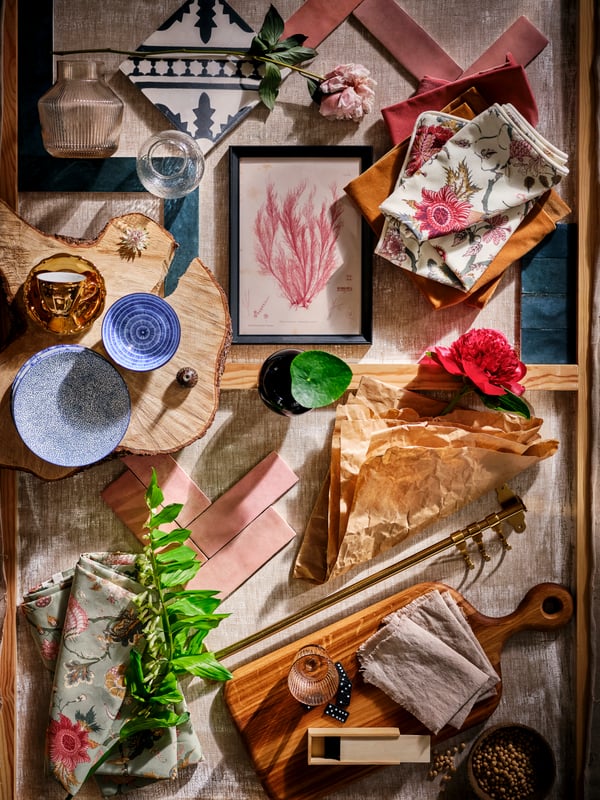
- Product information page

- Product information page
Step 4: Dare to choose
Translate all your gathered inspiration into a complete picture. Dare to choose and eliminate what is unnecessary. Focus on the essentials and minimise. What remains will guide your further choices.
You can refine your mood board with a spider web or mind map if you wish. Start with a large circle in the middle where you place the main feature of your mood board. Connect this word with other features and circle them. Continue until you have created a kind of spider web of elements and have a complete overview of your mood board. This way, you can visually see which colour and/or material you want to see a lot of.
Typically, IKEA interior designers work with the 60-30-10 principle. These numbers represent percentages that contribute to a beautiful balance. Your mood board consists of:
- 60% of the lightest colour
- 30% of the middle colour
- 10% of the darkest colour
This creates a nice balance. This applies not only to walls and floors but to the complete picture. From floor and wall to accessories to finish it off.
Step 5: Get started with decorating
Now that you've determined your style, you can start decorating. Consider the following:
- What colours and materials do you want on the walls?
- What do you want on the floor?
- What furniture do you need and what design suits this?
Use your mood board for every choice to ensure you're on the right track. This ensures that your interior is not only unique but also reflects your personality and becomes a space where you truly feel at home.
Now you can start designing and decorating your own unique interior. Not just any ordinary interior, but one that reflects your personality. An interior that works for you, a space where you can feel at home.
Finding it difficult to translate your ideas? Request interior advice from an IKEA interior designer.
